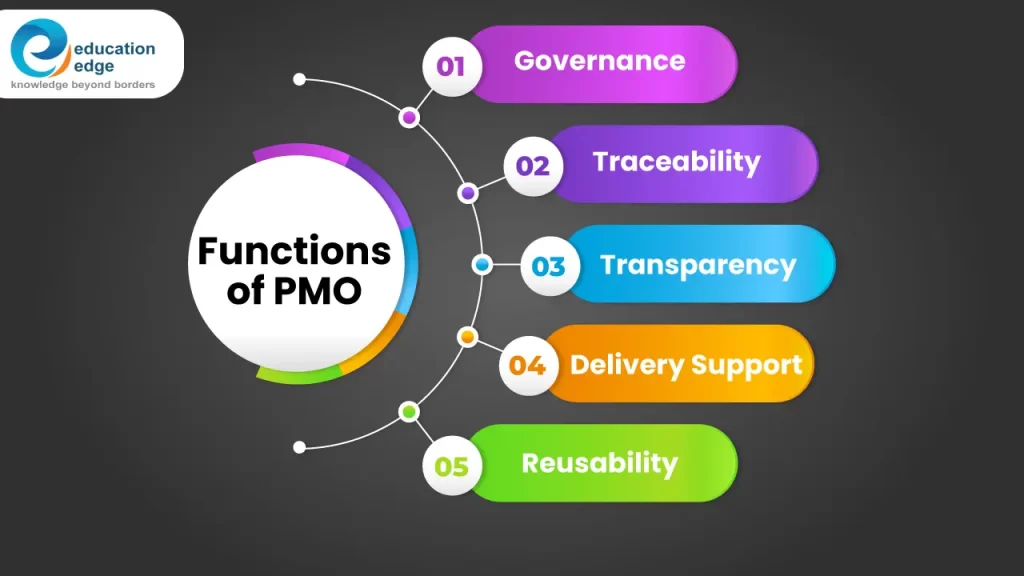
Ever wondered what is PMO and how to successfully enhance the project delivery process in your company? In the highly competitive climate of today, companies may promote consistent project delivery by using PMO standards. The Project Management Office (PMO), which manages all processes efficiently, develops plans, and ensures that they are carry out and completed on schedule, is the foundation of any organization of project management.
Make sure to check: PRINCE2: The Game-Changer for Project Management!
What is PMO?
The Project Management Office (PMO) is an organization responsible for maintaining project management benchmarks. They must ensure that all procedures, operations, and deliverable quality are manage efficiently.
PMO is essential when an organization has a number of active projects. It streamlines the process, aids in project estimation and planning, sets goals and objectives, and improves project quality. A deficiency at any of the stages can lead to the project failing, which is why the PMO is so important for the project’s success.
Types of Project Management Office

Project Management Office generally divided into three types such as:
- Supportive
- Controlling
- Directive
Supportive PMO:
It combines all projects in an organization, provides guidelines, templates, and training, but with limited control.
Controlling PMO:
It ensures that project management tools, techniques, and standards are utilize in projects in a controlled manner.
Directive PMO:
It maintains a high level of control over the project management process within the organization.
Roles and Responsibilities

1. Create Project Structure
The project structure is defined through the PMO to achieve …
- Projects are progressing on time and within budget.
- The use of resources is done efficiently.
- Risk assessment is carried out across all initiatives.
2. Provide Management Reports
The PMO attempts to organize all information and distribute it to all relevant parties. The project management office plays an important role to the project’s success since it manages data and reports for the following:
- The project’s progress.
- Whether or whether milestones are met on time.
- The current status of the deliverables.
- Risk-mitigation progress has been made.
- Budget, marginal cost, and actual cost are examples of financial data.
3. Resource Planning
One of the most essential elements that the PMO team oversees is effective resource planning. It generates a resource strategy and makes availability visible to all stakeholders. They make certain that the resource is effectively happening.
4. Processes and Workflows
The PMO is responsible for creating processes and workflows as well as simplifying them. Among them include simplifying the resource allocation process and maintaining data for resources such as their abilities and experience up to date. The most crucial is to identify any concerns that could lead to tragedy before it’s too late.
5. Communication and Team Collaboration
One of the essential duties is to simplify team communication and collaboration. They must ensure that all teams in different locations are on the same page and that assignments are on schedule and without delays.
6. Learning & Knowledge
The project management office ensures that knowledge is distribute among project teams. They give documentation, templates, and project plans to all team members in order to save time. All information/documents are centralized for the team’s convenience.
Functions of PMO

1. Governance
They ensure that the best choices are made by the right people based on the right information. This can also entail audits and peer evaluations, creating project structure, and ensuring accountability.
2. Traceability
They are responsible for handling documentation, project history, and organizational knowledge.
3. Transparency
They make sure the correct information is delivered to all stakeholders in order for timely decisions to be made.
4. Delivery Support
PMO improves processes and assists teams in working efficiently, on time, and with high quality. They assist in project delivery.
5. Reusability
There is no reason to “reinvent a new thing,” therefore they serve as a repository of learned lessons, providing templates and best practices from prior successful initiatives.
You may also check: Task Management: All the Details You’ll Ever Need to Know!
Frequently Asked Questions
What are the four Ps of PMO?
The four Ps of strategy execution: portfolio, programme, project, and performance management integration.
What is the PMO lifecycle?
The ITS Project Management Lifecycle is consist four phases that work together to describe, organize, and successfully deliver the intended project outputs. These are the phases of Initiation, Planning, Execution, and Closure.
What is the PMO classification?
PMOs are of three types based on their organizational structure: 1. Enterprise Project Management Office. 2- PMO at the organizational (departmental) level. 3- PMO with a specific function.







